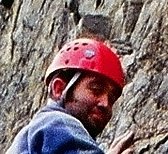Bahir Dar and the Lake Tana monasteries...
Day 27 Nov. 2
What a day! It started off early in Addis at 3 AM. I had booked transportation to Bahir Dar the day before with the hotel mananger. He basically laid out a travel itinerary with guides and hotels recommended.
I went to the hotel gates to wait for what I expected to be a minibus. A toyota truck was already there loading gear. After a while I was approached by a man from the truck who told me it was my ride. I cautiously piled in and we raced around the darkened streets of Addis with the men inside chattering away in Amharic. I felt like Kapuscinski in the middle of a situation that excited me but whose nature was beyond me.
We picked up an Ethiopian woman and an Israeli man whose name I would later learn was Adam. With all passengers on board we raced out of the city and into fertile farmland dotted with large green trees.
It was quite cool and mist was in the fields. The road was filled with people and animals. Most people had their heads wrapped in blankets for warmth while carrying walking sticks or switches (if they were hearding goats or cows).
If cars have the right of way in Ethiopia, there'd be no way of tellling it. The roads teemed with people and we had a few near misses with people and animals.
Of the people: There were shepherds, old women, girls carrying firewood and large gourds of water, groups of children (some tending animals), and the occaisional individual with an AK-47.
Of the towns along the way: true Africa - naked and unwashed. Dirt streets with ramshackle shacks serving as stores and restaurants. People swarmed through the streets and herds of animals shared the road with trucks.
At one point we emerged from the rolling, tree-covered hills and the cultivated valley floors to find ourselves climbing down the side of a massive gorge. The Blue Nile snaked its way along the bottom.
It took us the better part of an hour to descend into the gorge and easily an hour to climb out again. It was hazy from the heat but still a magnificent sight.
We stopped for a drink and a bite to eat after the gorge. I was treated to injera (Ethiopian flatbread - kind of like a huge grey-coloured sourish-tasting panacake) with lamb by one of the passengers.
We continued to drive through the fertile fields of sunflowers, tef, and even canola with shacks and peasant huts dotting the expanse.
The whole drive was quite the experience and a clear exposure to the Africa I've come to see (especially the towns).
Day 28 Nov. 3
This morning I was awakened by a host of birds outside the hotel room. I decided I wanted to see the monasteries of Lake Tana. After some negotiations with a guy I had run into yesterday I was on a boat with a guide and another Ethiopian.
The boat was fairly slow as we motored into the lake. Pelicans we present as we a few fisherman paddling about in small reed fishing vessels. After half and hour or so we arrived on a jungle-covered island. a set of stone stairs led the way through the foliage and past huge spider nets to the monstery of Kibran Gebriel.
A local monk hosted us in the monastery museum. It was filled with relics from the 13th Century - when the monastery was built. He showed us intricate crosses and ancient texts (some with pictures) written in Ge'ez (the Ethiopian equivalent to Latin or Sanskrit).
The monastery itself was a cylindrical stone building with a conical grass roof (which was protected from erosion by sheet metal). Inside was a huge cube-centre painted with various religios scenes.
On the way out we stopped and ate some injera with spice provided by another monk. The monks hovered in the background on the island. Our guide greeted many of them.
Back on the boat we headed to two more island monasteries. The monk of the final island showed off a 900-year-old text written on goatskin.
The feeling of history in this part of Ethiopia is palpable. Robed monks share the sidewalks with beggars and pedestrians.
It was a fascinating day and the first taste of the history I've come to see in this part of the world.
Day 29 Nov. 4
Today was a do-nothing rest day. One venture bears mentioning though.
I went out into the town in search of a telecom to call my folks. I was soon approached by a man who introduced himself as John and started talking. He said Ethiopians think of Canada as being "the moon" ("very peaceful"). With his help I was soon down a dirt road at a shack with 3 beaten-up phones. When the number didn't work I soon had my own entourage of Ethiopians leading me to another store. John and Ephrim went out of their way to help me and asked nothing in return. It was quite the heartening experience.

